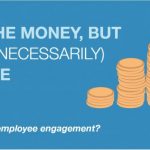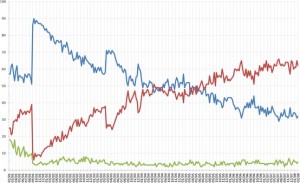Market segmentation says that customers of a single business, whether retail or B2B, are not all created equally. When you separate your customers into different groups, you find out that their needs, expectations, and experiences can be completely different, and this can often bring to light gaps or cobwebs in your customer service that you can improve upon to increase customer satisfaction and sales.
Recently, a high end automotive repair shop with multiple locations here in the Louisville area needed some professional research done. The owner was frustrated and perplexed as to why the company’s profits were down, even though he was being told by his customers how great everything was.
To answer this question we first developed a profile of “high profit customers,” within the company’s customer pool. This is a very high-end shop, and the most profitable customers owned a few $60,000 to $80,000 cars.
We segmented the profiles in a few different ways, starting with one of the most typical segmentations, male versus female. What we discovered was the company had really evolved past discrimination or sexist behaviors, so we there wasn’t significant value in this segmentation.
So we decided to slice the data a bit differently…we grouped these high-end customers into how long each had been a customer. Quite a different picture emerged…a snapshot of the “inner circle” versus the “outer circle” began to emerge.
What we found out was that even though all of these high-profit customers held the same profile and profitability potential, those who had been customers six months or less — the outer circle — were treated with much less special attention and courtesy as customers who had been clients for three years or more — the inner circle.
While the client may not have recognized there was an inner circle, the newcomers definitely felt like they were being treated differently. They saw certain customers being offered cold drinks, being called by name, and interacting with the staff on a whole different level. This created a stronger relationship with the “older” customers — which lead to more conversations where the “older” customers would give great feedback. The newcomers had a different experience. But since they didn’t have the close relationship, they didn’t have the opportunity to voice the negative feedback. After a while, they became not as loyal to the company.
As a countermeasure the company implemented additional customer service training, targeting all high-end, high-profit customers and bringing them into the inner circle. They offered them drinks, greeted them by name, and made them feel extra special. It was a small shift that generated a huge benefit, because the company’s profits began to surge upward.
Market segmentation allows companies to see those things they are unique between different populations and sub-groups within the general customer base. By using established research methods, a professional research organization like IQS can help you figure out where you may be falling down, and help you react and change accordingly.







